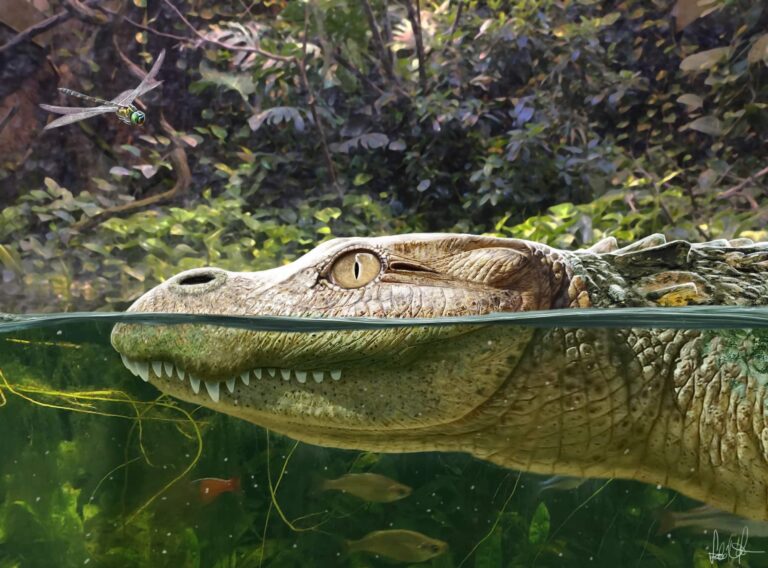
[ad_1]

Within a square-shaped pond in Ban Si Liam, Thailand, paleontologists excavated nine specimens of ancient reptiles in 2005. Among the treasure trove of fossils, scientists found a near-complete skull of an ancient alligator.
Now, after further examination and a study published in Scientific Reports, researchers found that the early skull is closely related to the modern-day Chinese alligator, Alligator sinensis. The remains are crucial for tracing the evolutionary origin of the species.
Ancient and Modern Species
The fossil was dated to be younger than 230,000 years old and was named Alligator munensis after the nearby Mun River. To find where the fossil fit on the evolutionary timeline, paleontologists compared it to 19 specimens belonging to four extinct alligator species and three modern species.
These included the modern American alligator (Alligator mississippiensis), the spectacled caiman (Caiman crocodilus) found in South America and the Chinese alligator, one of the few known alligator species outside of the Americas.
Where Was the Fossil Found?
Fossils for this type of modern alligator are rare. Still, researchers need them to understand whether the Chinese alligator arose from a species that evolved gradually and continued to exist as an interbreeding population or branched off and split into a different species.
The team excavated the skull in 2005 in Northeastern Thailand. Aside from finding the alligator skull, researchers found nine specimens total, including carapace of a late Neogene turtle and other reptiles. The findings were described in a 2011 paper published in Annales de Paléontologie.
These fossils allow scientists to understand the biogeographical distribution patterns of these species back then and now. Based on the fossils, researchers found that the Mun River system flowed East to West to the Chao Phraya River system back then. Now, it flows West to East to the Mekong River system.
Similarities to Modern Species
While examining the skull, the team pointed out that the ancient alligator fossil, A. Munensis, had a broad short snout, an elevated head, fewer tooth sockets and nostrils positioned away from the tip of its nose.
The fossilized gator differed from their New World counterparts’ head shape but more closely resembled the Chinese alligator. Chinese alligators have small, robust heads and more upturned snouts. Their eyelids also have a bony plate that the other alligators do not sport. The bodies of Chinese alligators are slightly different than their American counterparts, with their firm belly plates called osteoderms that the American reptiles lack.
Skull of the ancient fossil is shown at the top of the image. The skull of a Chinese alligator is shown at the bottom. (Credit: Gustavo Darlim and Márton Rabi)
Both the Chinese alligator and fossil have a small opening in the roof of the mouth, a ridge on top of the skull and a raised shelf behind their nostrils. For these reasons, the team suspects that these gators are closely related and share a common ancestor that stalked the waters of the Mekong-Chao Phraya River systems and the lowlands of the Yangtze-Xi. The separation between the two species may have occurred when the southeastern Tibetan Plateau elevations changed between 23 and five million years ago.
Paleontologists also noticed large tooth sockets towards the back of its mouth along the fossilized skull, indicating that the reptile at one point had large teeth big enough to crush shells. This suggests that the gator may have dined on hard-shelled prey like animals.
Also known as the muddy dragon, the Chinese alligator is found in the Yangtze River in China, where it feasts on crustaceans, snails and fish. The modern alligator also eats insects, rodents and young waterfowl. Overall, the find provides a look into the evolutionary origins of Asian alligators.
Read More: Crocodiles Are Particularly Good Mothers
[ad_2]